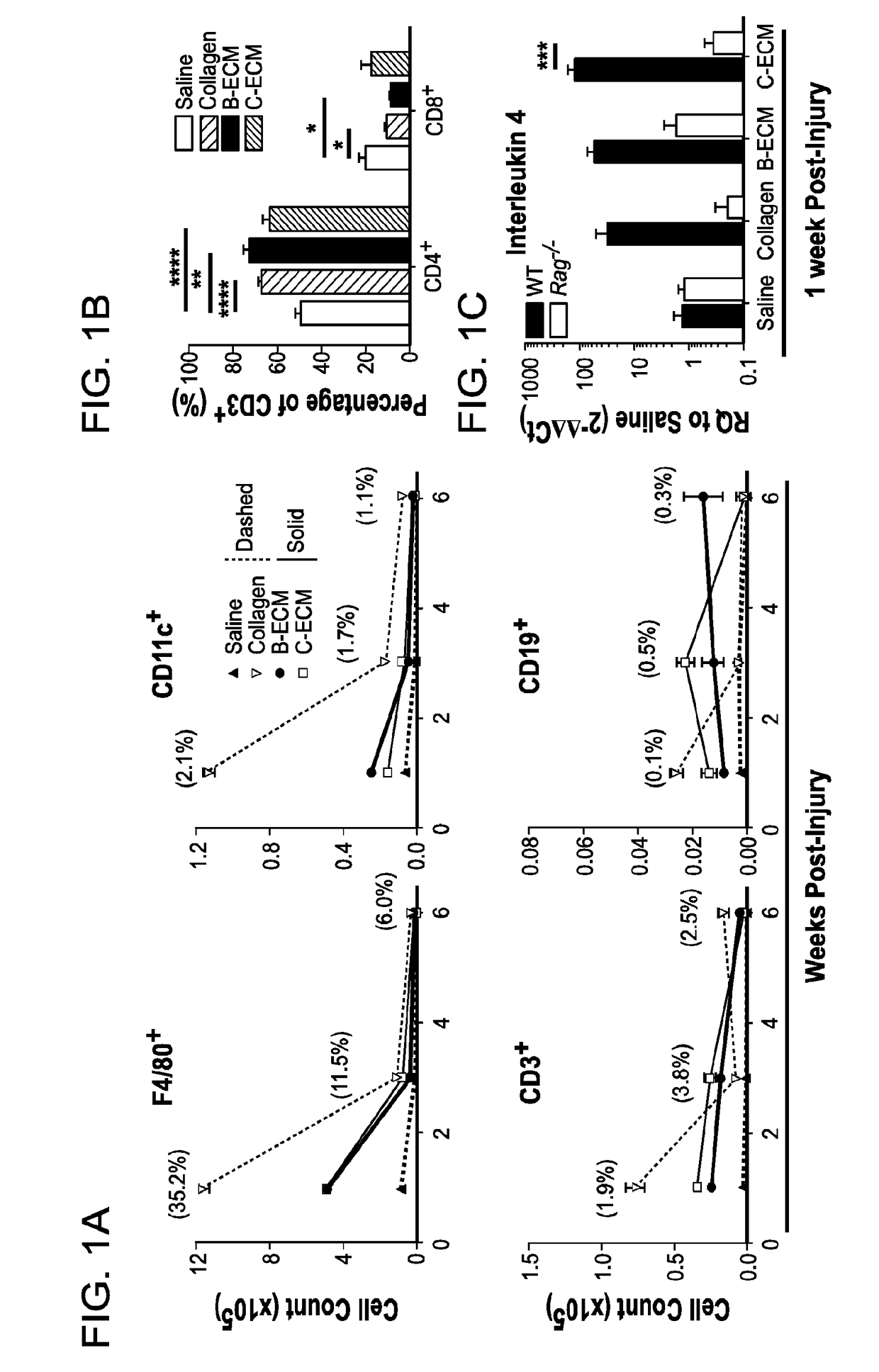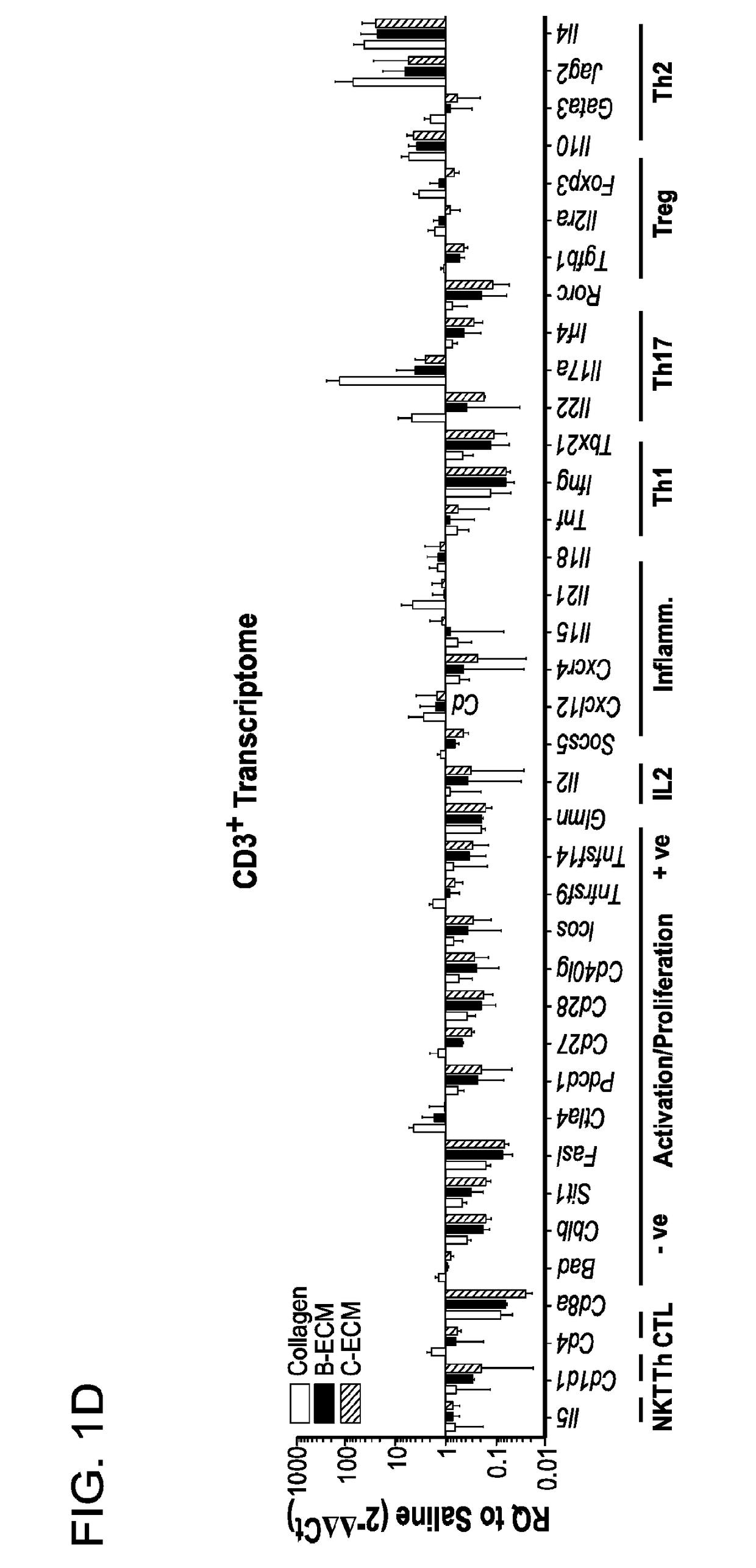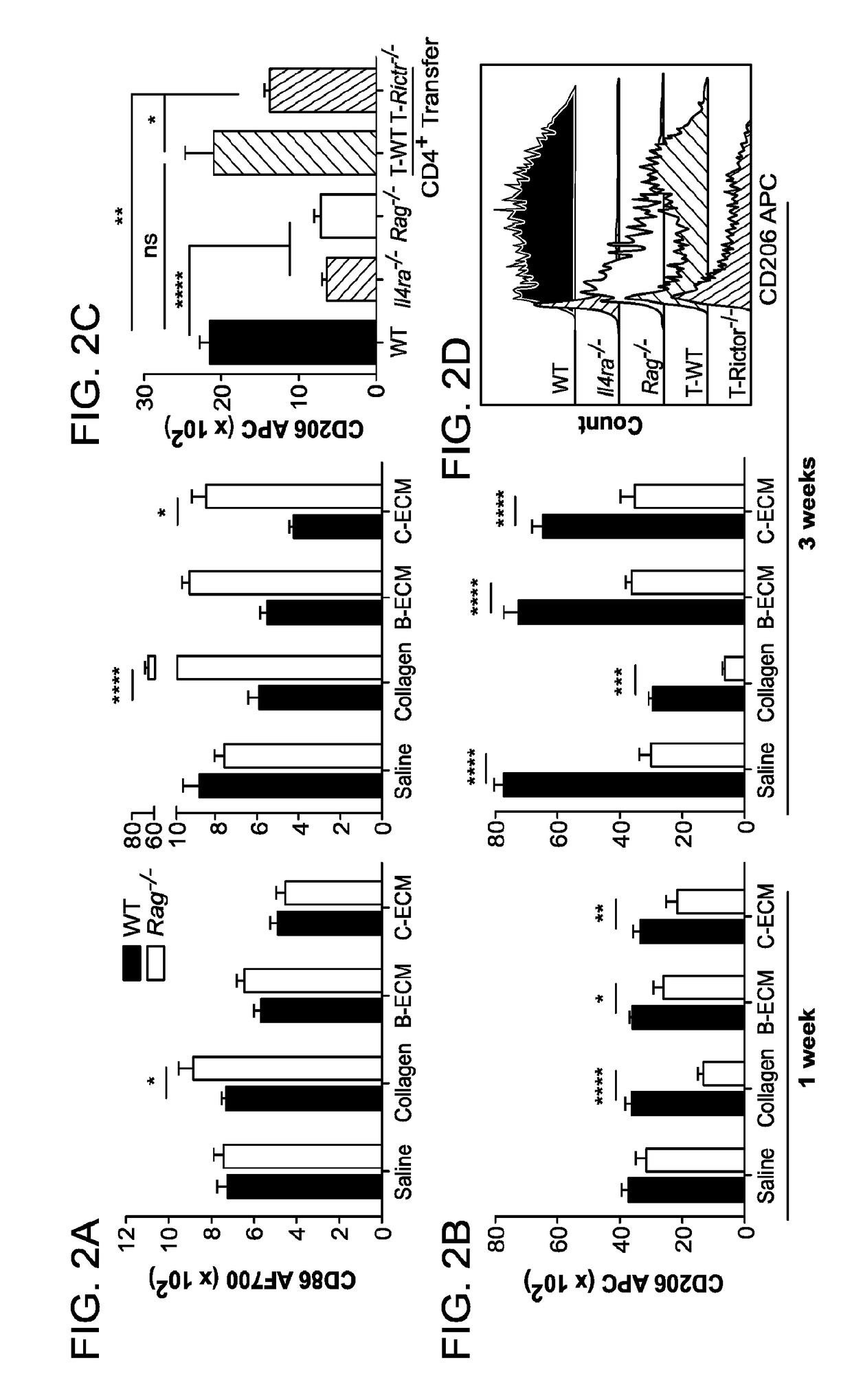Compositions and methods for modulating wound healing and regeneration
a technology of wound healing and regeneration, applied in the field of biomaterial scaffolds, can solve the problems of substantial disease burden, physical disruption of tissue integrity, severe emotional, physical and financial stress of patients, etc., and achieve the effects of reducing, suppressing, attenuating, or stabilizing the development or progression of diseas
- Summary
- Abstract
- Description
- Claims
- Application Information
AI Technical Summary
Benefits of technology
Problems solved by technology
Method used
Image
Examples
example 1
al Scaffolds Alter Immune Cell Recruitment in Volumetric Muscle Defects
[0219]To model a traumatic wound and create a tissue gap for scaffold implantation, a portion of the quadriceps muscle group in C57BL / 6 mice was surgically excised, provoking an irreversible volumetric muscle loss (VML) injury. The VML model was used to determine the role of biomaterial scaffolds on immune cell recruitment, shaping the immune microenvironment, and the Scaffold-associated Immune Microenvironment (SIM). Biological scaffolds have been used to repair muscle defects both in preclinical models and clinical testing (B. M. Sicari, et al. Sci Transl Med, 6(234):234ra58. (2014)).
[0220]Accordingly, both tissue-derived and collagen biomaterial scaffolds were applied to the VML tissue defects. Tissue ECM scaffolds were generated by mechanical and chemical processing to produce particulates containing the tissue specific extracellular matrix with no intact cells (see e.g., FIGS. 5A, 5B and 5E). Based upon the ...
example 2
Application and Adaptive Immunity Shape the Wound-Associated Immune Microenvironment
[0224]Macrophages and dendritic cells, which serve as antigen presenting cells (APCs), can interact with CD4+ helper T cells and CD8+ cytotoxic T cells through presentation of peptide antigens associated with the MHCII and MHCI isoforms of the major histocompatibility complex, respectively. Bidirectional interactions of APCs with CD4+ T cells can alter immune polarization of the environment by inducing secretion of cytokines such as IL-4, a major cytokine associated with both Thelper2 (Th2) and M2 pathways of T cell and macrophage differentiation, respectively.
[0225]Expression of MHCII (I-A / I-E) was detected at high levels on both F4 / 80+CD11b+ macrophages and CD11c+F4 / 80− dendritic cells, though the significant number of MHC− / low CD11c cells signifies a large proportion of immature dendritic cells (see e.g.,FIG. 6G). As shown in FIGS. 6D-6F, the expression levels of immune-related genes that support ...
example 3
Immune System Enables Local Biomaterial-Mediated Enhancement of Type-2 Polarization
[0228]Macrophages and dendritic cells carry self and foreign antigens to local draining lymph nodes, where they interact with and activate resident T cells. Activated T cells migrate to the site of injury where they may participate in SIM polarization. The strong influx of macrophages and T cells (FIG. 1A) corresponds with the detection of Arg1 and Fizz1 only in the wound environment of mice displaying a Th2 immune response (FIG. 6D), suggesting that a dominant Th2 response to the wound in presence of scaffolds is responsible for the recruitment of M2-type macrophages, which are in return beneficial for wound healing and tissue regeneration.
[0229]The macrophages recruited into the scaffold microenvironment, in the presence and absence of T and B cells, were characterized by comparing the expression of CD86 (a co-stimulatory molecule expressed at high levels by inflammatory type-1 / M1 macrophages) and C...
PUM
| Property | Measurement | Unit |
|---|---|---|
| Fraction | aaaaa | aaaaa |
| Fraction | aaaaa | aaaaa |
| Fraction | aaaaa | aaaaa |
Abstract
Description
Claims
Application Information
 Login to View More
Login to View More - R&D
- Intellectual Property
- Life Sciences
- Materials
- Tech Scout
- Unparalleled Data Quality
- Higher Quality Content
- 60% Fewer Hallucinations
Browse by: Latest US Patents, China's latest patents, Technical Efficacy Thesaurus, Application Domain, Technology Topic, Popular Technical Reports.
© 2025 PatSnap. All rights reserved.Legal|Privacy policy|Modern Slavery Act Transparency Statement|Sitemap|About US| Contact US: help@patsnap.com



